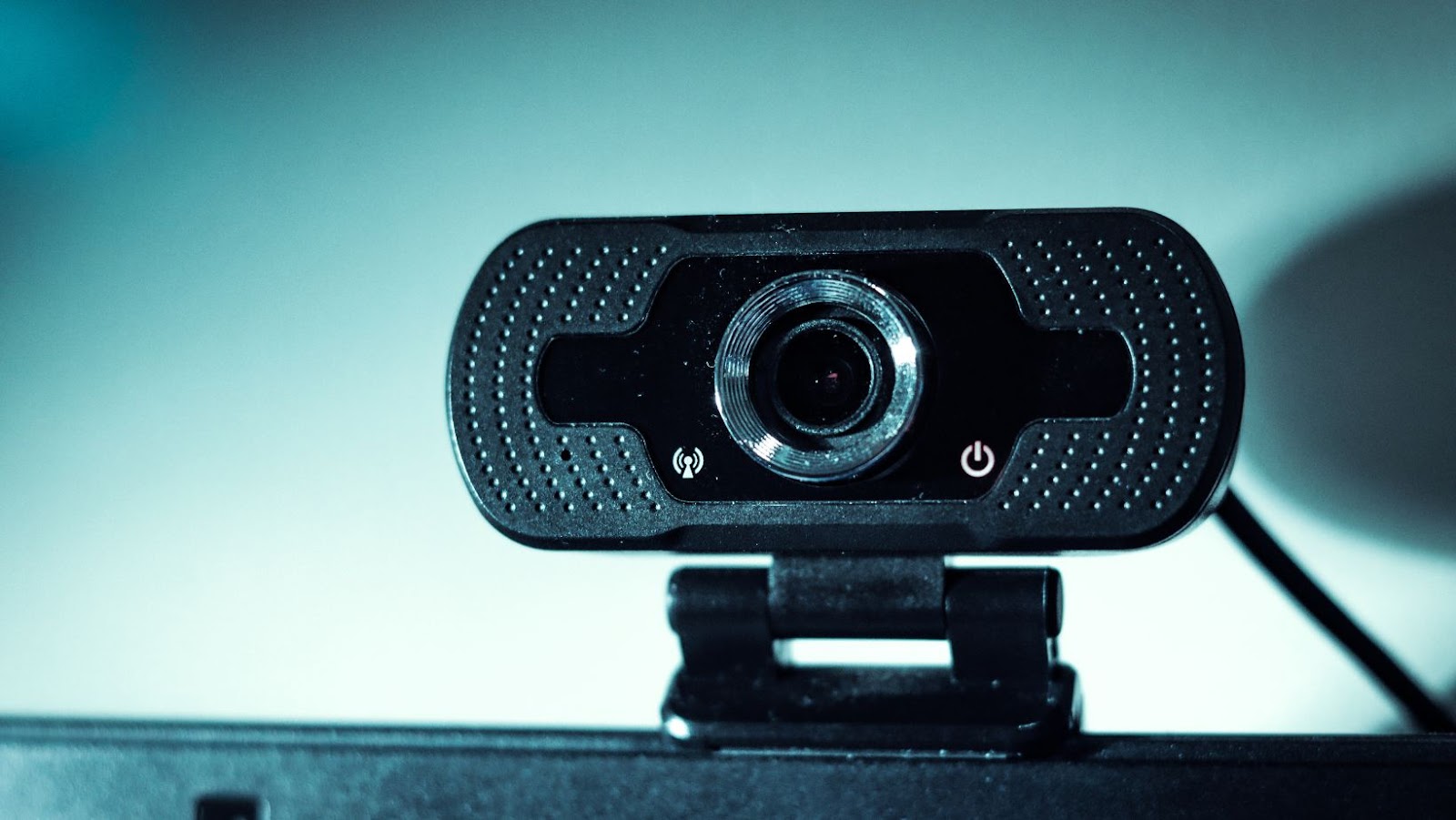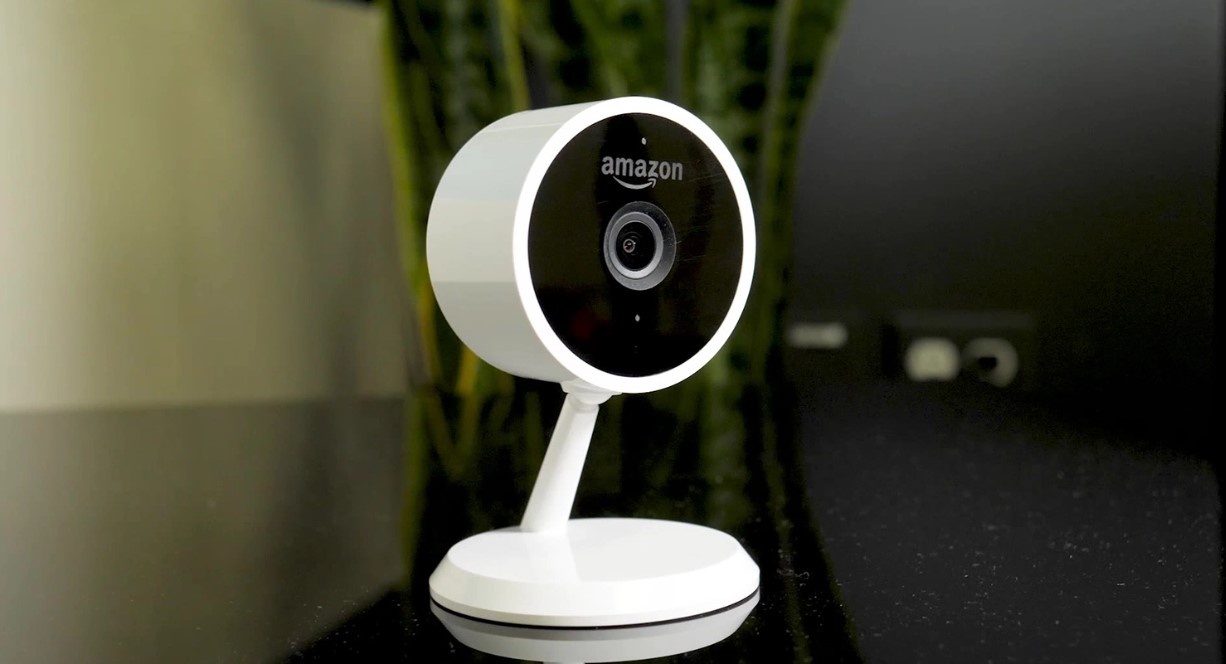
Dropcam and Nest Cam are popular home security cameras that offer similar features but differ in several key aspects.
Here are some key differences between Drop Cam and Nest Cam:
1. Field of view: Nest Cam has a wider field of view compared to Drop Cam. Nest Cam’s field of view is 130°, while Drop Cam’s field of view is 107°.
2. Storage space: Nest Cam stores video footage in the cloud, while Drop Cam requires an additional subscription to store video footage.
3. Two-way audio: Only Nest Cam includes a microphone and speaker, enabling two-way audio communication with people on the camera’s footage.
4. Night vision: Nest Cam has a better night vision than Drop Cam, using eight infrared LED sensors to stay clear and bright compared to Drop Cam’s four infrared sensors.
5. Integration: Nest Cam is highly integrated with other smart home devices and can be controlled using voice commands. Drop Cam does not have as much integration as Nest Cam.
These differences between Drop Cam and Nest Cam should help you decide which camera is better suited to your home security needs.
Drop Cam vs Nest
Are you deciding between Drop Cam and Nest Cam? If so, you may want to look at the design of each device to determine which would best suit your needs. Both cameras have unique design aspects that differentiate them from each other.
Let’s take a look at these design differences.
Differences in Size And Dimension
Drop Cam and Nest Cam are two popular security camera brands, each with its own design differences.
Drop Cam is a smaller and more discreet camera, measuring 4.5 x 3.15 x 3.15 inches, with a sleek black or silver finish. It has a 107° diagonal field of view and a 130° horizontal field of view.
In contrast, Nest Cam measures 2.9 x 2.9 x 4.5 inches and features a wider-angle lens with a 130° diagonal field of view and a 120° wide-angle field of view. It also comes in black or white and features a magnetic base for easy installation.
Both cameras feature adjustable mounting brackets, Wi-Fi connectivity, and mobile app integration for remote viewing and control.
The choice between the two brands may depend on personal preference, installation needs, and budget.
Pro tip: Consider the size of the camera and its mounting options when choosing between Drop Cam and Nest Cam for your home security needs.
Differences in Mounting Options
Dropcam and Nest Cam are two popular security cameras with distinct differences in mounting options.
Dropcam: Dropcam cameras are designed to be placed on a flat surface, such as a shelf or tabletop, and come with a magnetic base for easy positioning. They do not offer any mounting options for vertical surfaces.
Nest Cam: Nest Cam cameras can be placed on a flat surface or mounted on a vertical surface, such as a wall, using a wall plate and mounting screws. The camera has a magnetic base that holds it in place on the wall mount. This gives you the flexibility to place your camera in the optimal position and angle for your needs.
When choosing between Dropcam and Nest Cam cameras, consider your preferred mounting options as well as other factors such as video quality, storage capacity, and smart home compatibility.
Differences in Color Options
When it comes to design differences between Drop Cam and Nest Cam, one of the key differences is the color options available for each brand. While Drop Cam only offers two color options, black and silver, Nest Cam comes in a wider variety of colors to match your home décor. The Nest Cam comes in black, white, and copper, giving users more options to choose from. Although color options may not be a deal-breaker for some, having the flexibility to coordinate your home security cameras with the interior design of your home can make all the difference in creating an aesthetically pleasing and seamless look. Therefore, if color coordination is important to you, then Nest Cam is the clear winner.
Video Quality Differences
When it comes to security and monitoring, two cameras that stand out are Drop Cam and Nest Cam. Both cameras provide excellent video quality, but what are the differences?
In this article, we’ll take a look at video quality differences between both cameras and discuss the advantages of each.
Differences in Resolution Options
Resolution plays a significant role in determining the video quality of a surveillance camera. Drop Cam and Nest Cam share similarities, and differences in video resolution that affect how they perform.
Drop Cam records at a maximum of 720p resolution, which is still a good video quality option.
Nest Cam records at 1080p resolution, a higher video standard that allows for clearer details even in low light situations. The ramifications of higher quality video resolution are that larger image files are produced. In addition to that, if you are streaming video or saving in the cloud, it may require more internet bandwidth and storage space. When selecting between the two, pick based on your needs for video resolution, installation cost, and storage space capability.

Differences in Frame Rates
Frame rate is a crucial factor in determining the quality of the video captured by security cameras, such as Drop Cam and Nest Cam. The frame rate is the number of still images or frames that a camera captures per second to create a smooth and seamless video experience.
The frame rate of Nest Cam is 30 frames per second (fps), whereas the frame rate of Drop Cam is 15 fps. A higher frame rate ensures smoother video playback and less choppiness during live streaming or recordings. A higher frame rate is especially useful for capturing motion events such as sports, wildlife, or intruders in real-time. However, a higher frame rate requires more bandwidth and storage space to process and save the video footage. Therefore, determining the appropriate frame rate depends on your specific security needs and internet bandwidth.
Differences in Compression Formats
Compression format is a critical factor to consider when assessing video quality, particularly when comparing Drop Cam and Nest Cam. These two popular streaming devices use different compression formats, with varying differences in quality. Drop Cam uses the H.264 compression format, which is known for its efficient data compression and excellent video quality. However, it requires high processing power to compress data, which can lead to increased latency. Meanwhile, Nest Cam employs the more advanced H.265 compression format, which offers up to 50% more data compression than H.264. This results in improved streaming quality, faster download, and lower bandwidth consumption. The primary advantage of Nest Cam is that it is powered by Google intelligence, which features an advanced alert system, familiar face recognition and a library of Google’s voice assistant.
In conclusion, while Drop Cam is efficient at producing quality videos, Nest Cam offers better compression, a faster download, and a host of features made possible by Google technology. So, choosing between these two largely depends on your priority.
Audio Quality Differences
Drop Cam and Nest Cam are two popular security devices used to monitor events at home or in the office. One of the key differences between the two is in the audio quality they offer.
This article will discuss the differences in audio quality between the two products to help you decide which product is right for you.
Differences in Microphone Quality
When it comes to audio quality, there are significant differences between Drop Cam and Nest Cam. Drop Cam offers clear audio quality, while Nest Cam has a lower audio quality but still delivers a decent experience. Dropcam audio quality is much crisper and clearer. This is because Drop Cam has an extra microphone that helps block out unwanted background noise, delivering clearer audio that is easy to understand. Nest Cam, on the other hand, has only one microphone and offers a lower audio quality compared to Drop Cam. While Nest Cam’s audio is decent, it doesn’t compete with Drop Cam’s audio clarity.
When it comes to choosing between the two, if audio quality is a top priority, Drop Cam is the better option. If audio quality is not as critical and you want other features like better video quality or ease of use, Nest Cam is a suitable option.
Differences in Speaker Quality
When it comes to audio quality, there are significant differences between Drop Cam and Nest Cam, making the latter a more expensive but superior option. Nest Cam comes equipped with a high-quality speaker that allows for clear two-way communication between the camera and the viewing device. On the other hand, Drop Cam’s microphone is less sensitive, which can cause audio distortion and make it difficult to hear conversations from a distance. Nest Cam also offers noise-cancellation technology, which makes it easier to hear sounds and voices clearly, no matter how noisy the environment is. Additionally, Nest Cam offers a wider frequency range than Drop Cam. This means that you’ll be able to hear both low and high-frequency sounds more acutely. If audio quality is a vital factor in your surveillance needs, Nest Cam is the superior choice, despite being more expensive. Pro Tip: Ensure you examine the audio quality of security cameras before making your final purchase decision.
Differences in Noise Reduction Features
When it comes to audio quality, there are several differences in noise reduction features between Drop Cam and Nest Cam.
Drop Cam uses two-way audio, allowing you to both listen and speak through the camera. While it doesn’t have noise reduction features, it does offer an active audio indicator that displays when sound is detected. On the other hand, Nest Cam has a built-in microphone and speaker that provide a clearer sound quality, and it also uses advanced noise reduction features to filter out extra background noise. Additionally, Nest Cam includes audio activity detection that sends an alert to your phone when a loud noise, such as a dog barking or a baby crying, is detected.
Therefore, if audio quality is important to you, Nest Cam is the better choice due to its superior sound quality and advanced noise reduction features.
Smart Home Integration Differences
If you’re looking for security cameras for your smart home, you probably know about the DropCam and the Nest Cam. While the Drop Cam and Nest Cam both have smart home integration features, there are some key differences between them. Let’s take a look at the main differences between these two camera systems in terms of smart home integration.
Differences in Supported Smart Home Platforms
Dropcam and Nest Cam are both popular home security camera options, but they differ in their integration with smart home platforms. Dropcam is supported on fewer platforms compared to Nest Cam. Dropcam can only be integrated with the Nest and Wink smart home ecosystems, while Nest Cam can be integrated with Nest, Wink, IFTTT, and Amazon Alexa for voice control.
Additionally, Nest Cam uses a wider range of sensors and provides more advanced security features than Dropcam, such as person detection and facial recognition. While both cameras offer similar video quality and subscription options, Nest Cam has the upper hand in compatibility and advanced security options. Therefore, if you’re looking to integrate a camera into your smart home, Nest Cam might be the better option.
Differences in Supported Third-Party Devices
When it comes to smart home integration, both Drop Cam and Nest Cam offer support for third-party devices, but there are some key differences to note between the two.
Nest Cam offers integration with more third-party devices and platforms, such as Google Assistant, Amazon Alexa, Philips Hue, and IFTTT, making it a more versatile option. Drop Cam, on the other hand, has more limited third-party device support and is primarily designed to be used with the Drop Cam app and cloud service. Ultimately, the choice between the two will depend on your individual smart home setup and integration needs.
Differences in Automation Features
Drop Cam and Nest Cam are two popular home security camera brands, each with unique features and differences in automation features.
Key differences between Drop Cam and Nest Cam include:
Audio Capabilities: Nest Cam has a built-in speaker and microphone, allowing for two-way communication. In contrast, Drop Cam only allows one-way communication, meaning you can hear what’s happening but can’t speak through the camera.
Smart Home Integration: Nest Cam is designed to work seamlessly with different smart home devices through Google Assistant and Alexa. Drop Cam only offers limited integration options.
Storage: Nest Cam offers continuous video recording with a monthly/monthly/yearly subscription service. Drop Cam only stores footage locally.
Mobile App: Nest Cam’s mobile app allows for more customization and control over the device, including the ability to set activity zones and receive alerts for specific events. Drop Cam offers fewer customizations in the app.
These differences in automation features make each security camera unique and cater to different users’ preferences and lifestyles.
Subscription And Pricing Differences
Drop Cam and Nest Cam are two of the most popular home security cameras available. Although both cameras have similar features, there are some key differences between the two when it comes to subscription and pricing.
In this article, we will explore the differences between the two cameras in terms of cost, storage space, and features.
Differences in Subscription Plans
When it comes to choosing the right security camera, understanding the differences in subscription plans is crucial. Drop Cam and Nest Cam are two popular options on the market, and while they share similar features, there are key differences in their subscription plans.
Drop Cam’s basic plan includes 7 days of cloud recording, up to 3 cameras, and access to live streaming. For an additional fee, users can access advanced features such as person detection and activity zones. Nest Cam offers a similar basic plan, with 5-30 days of cloud recording depending on the number of cameras and continuous video recording. Nest Cam’s more advanced subscription offers intelligent alerts and facial recognition for an additional fee. When choosing between the two, it’s important to consider the number of cameras needing coverage, the desired amount of cloud storage, and the need for advanced features.
Pro tip: By understanding the differences in subscription plans, you can choose the right security camera for your needs and budget.

Differences in Cloud Storage Options
Dropcam and Nest Cam are two popular cloud storage options for home security systems. While both offer similar features, there are several differences between the two services that may affect your decision. Dropcam offers two subscription plans: standard and pro. The standard plan lets you store up to 7 days of footage for $9.95/month, while the pro plan stores up to 30 days of footage for $29.95/month. Nest Cam also offers two plans: Nest Aware and Nest Aware Plus. With Nest Aware, you can store up to 30 days of footage for $6/month, and the Nest Aware Plus plan stores up to 60 days of footage for $12/month. In addition to storage, Nest Aware offers advanced features like facial recognition and person alerts, which are not available with Dropcam. Note that while Dropcam and Nest Cam have different subscription and pricing structures, they’re both great options for home security. Choose the one that fits your budget and offers the features you need.
Pro tip: Before investing in a cloud storage option, do your research and compare prices, features, and customer reviews to find the best fit for your needs.
Differences in Pricing And Availability
There are significant differences in pricing and availability when it comes to subscription plans and upfront costs for Drop Cam and Nest Cam.
Drop Cam: This is a brand of smart home security cameras that offer free cloud storage for users. However, certain features, such as motion detection alerts and two-way audio, require a subscription to Nest Aware, which starts at $6/month.
Nest Cam: This is a more advanced brand of smart home security cameras that offer a wider range of features than Drop Cam, including facial recognition and 24/7 continuous recording. However, Nest Cam requires an upfront purchase cost, starting at $129, as well as a monthly subscription fee for Nest Aware, which starts at $6/month.
Ultimately, the cost and functionality differences between Drop Cam and Nest Cam depend on individual needs and preferences.
Comparison And Final Verdict
Choosing between Drop Cam and Nest Cam can be tough as both have their own unique features and technologies. Drop Cam and Nest Cam are two popular security cameras for home surveillance, but what are the key differences between them?
This article will compare the two cameras and provide a final verdict on which one is the best choice.
Comparison of Key Features And Differences
When comparing Drop Cam and Nest Cam, the two most popular home security cameras, there are several key features and differences that set them apart.
Drop Cam: – 107 degree of view, 4x digital zoom, and 8 infrared LEDs for night vision – Motion and sound detection – Cloud recording option with a subscription – Price point: $199
Nest Cam: – 130 degree of view, 8x digital zoom, and 8 infrared LEDs for night vision – Motion and sound detection, with person detection feature available with subscription – Cloud recording option with a subscription – Price point: $199
Ultimately, the choice between Drop Cam and Nest Cam comes down to personal preference. Nest Cam has a wider field of view and person detection feature, while Drop Cam is slightly cheaper. However, both cameras have similar features and functionality, making them both reliable options for home security.
Final Verdict on Which Camera is Better For Specific Use-Cases
After comparing Drop Cam and Nest Cam, the verdict on which camera is better for specific use-cases depends on your needs and preferences.
Drop Cam: Drop Cam is a simpler and more affordable option, making it ideal for those who want basic home monitoring capabilities without any extra features. The camera offers 720p resolution, a field of view of 107 degrees, and night vision.
Nest Cam: Nest Cam has more advanced features, making it a better choice for those who want to monitor their home security more closely. The camera has a 1080p resolution, a wider field of view (130 degrees), and two-way audio. Nest Cam also offers continuous recording with a subscription plan.
So, if you want basic monitoring capabilities at an affordable price and a simpler set-up, go for Drop Cam. However, if you’re looking for a more advanced, feature-rich camera that offers better video quality and advanced audio features, Nest Cam is the way to go.
Pro Tip- It’s crucial to consider your specific needs and preferences when choosing a camera in order to make an informed decision.












